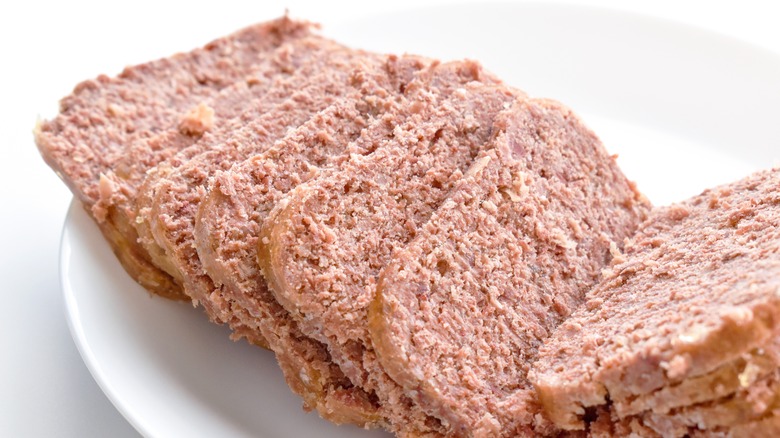Canned corned beef is a convenient pantry staple that can be used in a variety of dishes. But what exactly is in those little tins? In this article, we’ll take a close look at how corned beef is made and packaged to become the canned product you know and love.
A Brief History of Canned Corned Beef
While corned beef has its origins in Irish cuisine, canned corned beef was popularized as a military ration. “Bully beef,” as it was called, was a common meal for British and Allied forces during World War I and World War II. The affordable canned meat was easy to store and transport to soldiers on the front lines.
After the wars, companies like Hereford and Libby’s introduced canned corned beef to the civilian market. It became especially popular in the United States and Philippines as an ingredient in classic recipes like corned beef hash, Reubens, stews, and more. Today, South American countries like Brazil are the leading producers of canned corned beef sold globally.
Canned vs. Fresh Corned Beef
Canned corned beef differs from the fresh deli variety in a few key ways
-
Meat Used Fresh corned beef is usually made from brisket. Canned uses cheaper cuts like round chuck or rump roast.
-
Preparation: Fresh corned beef is brined and simmered. Canned is cooked while sealing in the can.
-
Flavor: The brisket in fresh corned beef lends richer flavor. Canned is saltier with subtle spice notes.
-
Texture: Fresh slices are tender. Canned is soft, mushy, and shreds easily.
So while canned lacks the robust meatiness of fresh, it offers convenience impossible to replicate at home.
Ingredients in Canned Corned Beef
Canned corned beef contains just a handful of ingredients:
-
Beef: Usually round or cheaper cuts.
-
Water: Provides moisture.
-
Salt: For brining and flavor.
-
Sugar: Balances salty taste.
-
Sodium nitrite: Curing salt that gives pink color.
-
Sodium erythorbate: Preservative to retain color.
-
Sodium nitrate: Preservative that prevents bacterial growth.
-
Natural flavors: For subtle seasoning.
The beef is cured in a brine solution before canning. No actual corn is used! The “corn” refers to the large salt grains used in dry curing historically.
How Canned Corned Beef is Made
The process of canning corned beef involves multiple steps:
-
Curing: Beef is brined in a salt and water solution with curing salts. This takes 5-7 days.
-
Cooking: The beef is pressure steamed until tender.
-
Seasoning: Sugar, sodium glutamate, and spices are added for flavor.
-
Canning: The corned beef is packed into cans along with broth or water.
-
Sterilization: Canned beef is cooked again at high heat to kill bacteria.
This makes the contents shelf-stable and safe to eat straight from the can! No refrigeration required until opened.
Health Considerations
-
Canned corned beef is high in protein and iron. A 2 oz serving provides 13g protein and 8% daily iron.
-
It’s very high in sodium, with around 550mg per serving. Look for lower sodium options to reduce intake.
-
The curing process creates nitrates that may increase cancer risk. Eat in moderation.
Overall, canned corned beef is fine in moderation but high sodium levels mean it shouldn’t be an everyday meal.
Tips for Cooking with Canned Corned Beef
Canned corned beef is pre-cooked so no heating is required. But sautéing or crisping it up improves flavor and texture tremendously. Here are some tips:
-
Sauté with onions and garlic for an easy corned beef hash.
-
Add to casseroles, stews, pasta bakes for savory flavor.
-
Crisp in a skillet before adding to sandwiches or wraps.
-
Mix with mashed potatoes for corned beef colcannon.
-
Add to cooked rice bowls along with veggies.
-
Use in place of deli corned beef in any recipe.
With just a few minutes of cooking, the salty canned meat can become the star of many quick and delicious meals.
Availability and Storage
Canned corned beef can be purchased at any grocery store, usually for $3-6 per small tin. Popular brands include Libby’s, Hereford, and store generics. It’s often stocked in the international food aisle.
Once opened, refrigerate leftover corned beef for 3-4 days. To extend shelf life, freeze unused portions for up to 3 months. Unopened cans can be stored in the pantry for 2-5 years.
Canned corned beef is appreciated around the world for its versatility and long shelf life. Understanding exactly how it’s made and processed allows you to incorporate this convenient ingredient into your cooking routine. With a few sizzling slices of the pink stuff, you can whip up a fast meal or appetizer that’s sure to please any crowd.

What does canned corned beef taste like?

Given that most corned beef gets soaked in salt brine for five to seven days, one of the big flavor elements in the canned meat is saltiness. Thats not all, but its a big part of it. Canned corned beef has fewer spice varieties than from-scratch corned beef, so you may not also taste the subtle flavors of cloves, coriander, juniper, ginger, black peppercorns, and other spices and herbs that home chefs often put into their personal corned beef recipes.
Due to the cured meat in corned beef, its not inaccurate to say that its flavor resembles a hot dog a little bit. Although it wont have the smokey flavor that bacon or ham does, certain elements within the flavor profile of the canned beef bring bacon, ham, and other cured meats to mind. This has to do with the pink curing salt that manufacturers use to make all these different types of meat.
Its also not far off the mark to say that some corned beef has all the different flavor elements: sweet, sour, salty, bitter, and umami. The flavor breakdown of each of these elements will depend on the recipe that the manufacturer used to make the canned corned beef, however. For example, canned corned beef usually contains salt and sugar but may not contain coriander, which is a little on the bitter side. In this case, then, the corned beef may not have as much of the bitter element in its flavor profile.
Nutritional information about canned corned beef

From a nutritional standpoint, eating canned corned beef has the potential to fill the body with some much-needed nutrients. One serving of canned corned beef, which is two ounces, gives your body 13 grams of protein. To offer some context, thats about one-quarter of the recommended daily allowance for a 50-year-old woman, who requires around 53 grams of protein a day, according to Harvard Medical School. It also offers 8% of the daily allowance for iron.
On the flip side, due to the brining process, canned corned beef comes with a lot of sodium, nearly 550 milligrams per serving. It also has a good amount of fat — 8 grams on average. Because of how its prepared, its nearly impossible to avoid the large amounts of sodium, though some brands like Hereford do make a lower-sodium version of their corned beef. Opting for that version of the canned meat instead of the regular version reduces sodium intake for the day by 25%.
This Is How Canned Corned Beef Is Really Made
FAQ
Is canned corned beef a real corned beef?
The canned corn beef is not the same thing as what Americans mean by corned beef. It is a preserved beef product, but it is extremely soft – spreadable in fact – with a fibrous texture, and very heavily marbled with soft white fat. You certainly can’t cook it in water, let alone for five hours – it would liquidize.
Is canned corned beef healthy?
Corned beef typically contains high levels of cholesterol , fat and sodium, so it’s not the healthiest of foods. It’s not typically viewed as a healthy ingredient, but lean cuts of corned beef can be purchased upon request. The fat can also be trimmed off, and steaming can also help melt the fat off.
